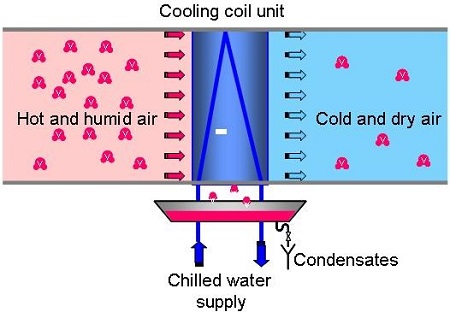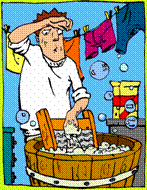In summer the hot outside air can contain lots of vapor. Without any particular treatment, introducing this air into buildings for airing purposes can lead to atmospheres which are too humid, especially in areas holding many people, such as meeting rooms or theaters.
Air conditioning will allow us to handle both the temperature problem and that of humidity. In fact, to remove the vapor from the air it is sufficient to cool the air (the molecule agitation decreases and the vapor molecules return to their liquid state).
By air conditioning the premises we are therefore achieving two things:
- Preventing the temperature from rising
- De-humidifying the premises

Thus, for the majority of our air conditioning installations, we are not
concerned about humidity in summer. We know just that the presence of a cooling
system will ensure a certain de-humidification which as a general rule will be
sufficient to provide acceptable comfort conditions.
This de-humidification however is not free. When condensing the water vapour
releases heating energy (see E-book ”Temperature, expansion in HVAC ”):

The cooling power output will therefore be used in part to cool the air (sensitive
power), and in part to de-humidify (latent power).
Thus, in our temperate climates, an air conditioner with a total refrigerating power of 3,000 [W] will in fact supply only 2,500 [W] for cooling, with 500 [W] being used for de-humidification.
This distribution however is subject to level of humidity of the air to be cooled. In very humid premises (changing rooms, laundries, tropical climates, etc) the refrigerating power for de-humidification could be much greater.
Cooling humid premises requires a more powerful air conditioner to provide the same cooling level for dry premises.

